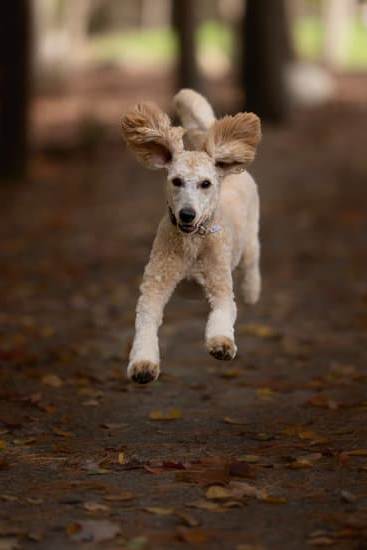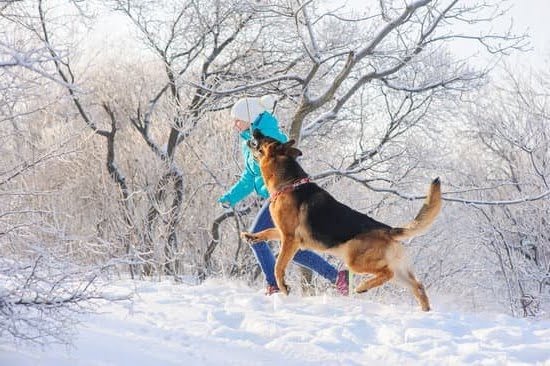Are you struggling with how to train your dog to stay in place? Teaching your dog to stay in one spot can be a valuable skill for both their safety and your peace of mind.
In this article, we will explore the importance of training your dog to stay in place and provide an overview of the training process. Whether you have a new puppy or an older dog, understanding the command “stay” is essential for their obedience and well-being.
The stay command is a fundamental part of every dog’s training. It not only ensures their safety in potentially dangerous situations but also allows for better control and discipline. Before delving into the specifics of training techniques, it’s important to understand the significance of teaching your dog to stay in place. This skill can greatly enhance their behavior and responsiveness to commands, ultimately leading to stronger bonds between you and your pet.
While the concept of training may seem daunting, it is important to realize that with consistency and patience, any owner can successfully teach their dog to stay. Throughout this article, we will discuss various techniques and strategies for effective training, including basic and advanced methods as well as common challenges that may arise. By the end of this comprehensive guide, you will be equipped with the knowledge and confidence necessary to train your dog to stay in place effectively.
Understanding the Command “Stay”
The stay command is an essential skill for every dog to learn, as it teaches them self-control and obedience. The command requires your dog to remain in a specific position until they are given a release cue. This can be extremely useful in various situations, such as when you need your dog to stay put while you open the door, when meeting new people, or during veterinarian visits.
It is important for dog owners to understand that the stay command should be introduced gradually and with patience. It is crucial to have realistic expectations of your dog’s ability to learn and obey the command. By understanding the significance of the stay command, you can effectively train your dog and strengthen the bond between you and your pet.
In different scenarios, the stay command can be extremely beneficial. For example, when walking your dog off-leash in a safe area, having them stay in place before crossing a road ensures their safety. Additionally, using the stay command at meal times encourages good behavior and prevents food aggression.
In emergency situations, such as when a door is left open or during unexpected encounters with other animals, a well-trained stay command can potentially save your dog’s life. Understanding these scenarios will help you see the value of teaching your dog to stay in place.
Preparing for Training
Before starting the actual training process, it is important to prepare adequately in order to set your dog up for success. Here are some essential steps to take before diving into training:
- Supplies and Tools: Gather all the necessary supplies and tools such as treats, a leash, and a clicker if you choose to use one. Having these items readily available will make the training process smoother.
- Conducive Environment: Choose a quiet and familiar environment for training sessions. Minimize distractions to help your dog stay focused during the training.
- Realistic Goals: It’s important to set realistic goals for the training sessions. Start with shorter durations and gradually increase the length of time your dog is required to stay in place.
Additionally, consider your dog’s individual needs and temperament when preparing for training. Some dogs may be more food-motivated while others may respond better to verbal praise or playtime as a reward. Understanding what motivates your dog will be crucial in preparing for successful training sessions.
By taking the time to adequately prepare before beginning the training process, you’ll be setting a strong foundation for success in teaching your dog the stay command.
Ultimately, creating a positive and conducive environment for both you and your dog will allow for an effective and enjoyable training experience.
Basic Training Techniques
Teaching a dog the basic sit and stay commands is an essential part of their obedience training. These commands provide the foundation for more advanced training and help ensure that the dog can remain under control in various situations. To begin teaching these commands, it is important to have the right supplies and tools on hand.
A sturdy leash, a comfortable collar, and some tasty treats will all be useful during training sessions. Additionally, finding a quiet and distraction-free environment will help the dog focus on learning the commands.
Positive reinforcement is key when teaching a dog to sit and stay. Offering a small treat or verbal praise when the dog successfully follows the command will encourage them to repeat the behavior. It’s important to be consistent with both the command and the reward, so that the dog understands what is expected of them. Patience is also crucial during this process, as some dogs may take longer to grasp these concepts than others.
Consistency in training techniques is vital for success. Practicing these commands regularly will help reinforce the behavior and build a strong foundation for more complex training in the future. Training sessions should be kept short and enjoyable for both you and your pet. With time and dedication, your dog will master the sit and stay commands, setting them up for success in more advanced training techniques.
| Training Techniques | Importance |
|---|---|
| Positive Reinforcement | Encourages repetition of desired behavior |
| Consistency | Builds a strong foundation for future training |
| Patience | All dogs learn at their own pace |
Advanced Training Techniques
Once your dog has mastered the basic stay command, you can begin to advance their training by increasing the duration of the stay and introducing distractions. Here are some techniques to help take your dog’s training to the next level:
- Increasing Duration: Start by gradually increasing the amount of time your dog is expected to stay in place. Begin with short intervals and slowly work your way up to longer periods.
- Introducing Distractions: Once your dog can stay in place reliably, start introducing distractions such as toys, food, or other animals. This will help your dog learn to focus on staying put despite potential temptations.
- Practicing in Different Environments: It’s important to practice the stay command in a variety of environments to generalize the behavior. Start in a quiet, familiar setting and then gradually introduce new locations with different levels of activity and noise.
As your dog becomes more proficient at staying in place, you can begin to phase out the use of treats as a reward. This will encourage your dog to listen and obey simply for praise and positive reinforcement.
Remember that advanced training techniques require patience and consistency. It’s normal for your dog to struggle initially, but with practice and persistence, they will continue to improve their ability to stay in place even in challenging situations.
Common Challenges and Solutions
Addressing Restlessness or Disobedience
One common challenge in training a dog to stay in place is dealing with restlessness or disobedience. Dogs may become easily distracted or anxious, causing them to break the stay command. To address this issue, it is important to start with short durations and gradually increase the time as the dog becomes more comfortable. Additionally, using calming techniques such as soothing verbal cues or gentle petting can help keep the dog relaxed and focused during training sessions.
Tips for Troubleshooting and Adapting the Training Approach
Another common challenge is encountering resistance from the dog during training. It’s essential to identify any potential triggers that may be causing the resistance, such as discomfort with the training environment or fear of certain stimuli. By troubleshooting and adapting the training approach, dog owners can modify their techniques to better suit their pet’s needs. This could involve changing the rewards used, adjusting the duration of training sessions, or seeking professional guidance from a certified dog trainer.
Consistency and Reinforcement
Consistency is key in overcoming common challenges in training a dog to stay in place. Dogs thrive on routine and repetition, so maintaining a consistent approach to training is crucial for success. Additionally, reinforcing good behavior with positive reinforcement is essential for encouraging dogs to continue obeying the stay command. By consistently practicing and reinforcing the stay command, dog owners can address common challenges and ensure long-term success in their dog’s training journey.
Incorporating “Stay” in Daily Routines
Integrating the Stay Command in Everyday Scenarios
Once your dog has mastered the basic stay command, it’s time to incorporate it into your daily routines. This can include having your dog stay put while you prepare their meals, open the front door, or fetch the mail. By integrating the stay command into these everyday scenarios, you are reinforcing the training and ensuring that your dog understands that staying in place is a non-negotiable behavior.
Expanding the Dog’s Obedience and Responsiveness
Incorporating the stay command in daily routines also helps to improve your dog’s overall obedience and responsiveness. It teaches them to be patient and disciplined, as well as strengthening their bond with you as their owner. For example, when your dog stays calmly by the front door as you enter or leave the house, it not only showcases their obedience but also ensures their safety by preventing them from bolting out unexpectedly.
Maintaining Consistency and Patience
As with any training, incorporating the stay command in daily routines requires consistency and patience. Be sure to reinforce the training regularly and avoid situations where you allow your dog to disregard the stay command.
Additionally, remain patient if your dog does not immediately comply with the stay command in new situations – practice makes perfect, so continued reinforcement will help solidify their understanding of the command. By incorporating stay in daily routines, you will see a noticeable improvement in your dog’s behavior and responsiveness over time.
Maintaining and Reinforcing Training
After successfully teaching your dog to stay in place, it is important to understand the significance of maintaining and reinforcing the training. Regular practice and reinforcement are crucial in ensuring that your dog retains the command and continues to obey it in different situations. Consistency is key, so make sure to incorporate the stay command in ongoing training sessions.
To maintain the training, continue to practice the stay command with your dog on a regular basis. This can be done during daily walks, meal times, or when guests come over. By integrating the stay command into everyday scenarios, you can expand your dog’s obedience and responsiveness. Consistent practice will help reinforce the training and make it a natural behavior for your dog.
In addition to regular practice, it is also important to use strategies for ensuring long-term success in the training. This includes gradually phasing out the use of treats as a reward for staying in place. While treats can be effective during initial training, transitioning to verbal praise and affection as rewards can strengthen your dog’s understanding of the stay command.
Moreover, varying the environments where you practice the stay command will help solidify your dog’s ability to obey in different settings. By consistently reinforcing the training through these strategies, you can ensure that your dog maintains proficiency in staying in place.
Conclusion
In conclusion, teaching your dog to stay in place is a crucial aspect of their obedience and safety. Through understanding the command, preparing for training, and implementing basic and advanced techniques, dog owners can successfully train their pets to stay put in various situations. Additionally, addressing common challenges, incorporating the stay command into daily routines, and maintaining reinforcement all contribute to long-term success in training.
It is important for dog owners to remember that consistency and patience are key when training their pets. By setting realistic goals and gradually increasing the duration of the stay command, dogs can learn to stay obedient even in distracting environments. Furthermore, integrating the stay command into everyday scenarios not only expands the dog’s responsiveness but ensures their safety when out in public or at home.
In essence, maintaining regular practice and reinforcement is essential for solidifying a dog’s ability to stay in place. With dedication and perseverance, both the dog and its owner can enjoy the benefits of a well-trained pet who understands and obeys the stay command. Therefore, it is encouraged for dog owners to continue practicing and refining this fundamental yet valuable skill with their furry companions.
Frequently Asked Questions
How Do I Teach My Dog to Stay on Place?
Teaching a dog to stay in place requires consistency and positive reinforcement. Start by teaching your dog the “stay” command in a quiet, distraction-free environment. Use treats or toys to reward them for staying put. Gradually increase the time and distance before giving the reward. Practice this regularly and be patient with your dog’s progress.
How Do I Keep My Dog in Place?
Keeping a dog in place involves setting clear boundaries and using positive reinforcement. Utilize a leash or physical barrier if necessary to prevent your dog from wandering off.
Reward them for staying in place, whether it’s sitting or lying down, using treats, praise, or toys. Consistency is key to helping your dog understand where their place is and why it’s important to stay there.
How Do You Train a Dog to Play Dead?
Training a dog to play dead can be achieved through the use of positive reinforcement and patience. Start by teaching your dog to lie down on command. Once they have mastered this, you can gradually introduce the “play dead” cue while they are lying down.
Use treats or toys as a reward when they respond correctly, gradually refining their behavior until they fully understand and perform the trick on command. Remember to keep training sessions short and enjoyable for your furry friend.

Welcome to the blog! I am a professional dog trainer and have been working with dogs for many years. In this blog, I will be discussing various topics related to dog training, including tips, tricks, and advice. I hope you find this information helpful and informative. Thanks for reading!





